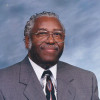Mass Shootings: An Imperfect Solution
In my book, Reclaiming the Family, I wrote these words: “Between 1997 and 1999, there have been nine publicized assaults on schools in the United States. On October 1, 1997, in Pearl, Mississippi, a 16-year old boy killed his mother and shot nine students; of which, two died. On December 1, 1997, at Heath High School in West Paducah, Kentucky, a 14-year old male student killed three fellow students and wounded five. On March 24, 1998, in Jonesboro, Arkansas, two boys, 11 and 13, shot to death four girls and a teacher and wounded ten other people… On May 21, 1998, in Springfield, Oregon, a 15-year old boy allegedly opened fire at a high school, killing two and injuring more than 20… On April 20, 1999, at Columbine High School in Littleton, Colorado, two young men—Eric Harris and Dylan Klebold—dressed in black trench coats, opened fire, killing 13 students and one teacher… On May 20, 1999, at Heritage High School in Conyers, Georgia, 15-year old T. J. Solomon shot six students. Fortunately none died.”
Since 1999, six other schools, not including the Newtown Massacre, have experienced mass shootings: On March 21, 2005, at a high school on Red Lake Indian Reservation in Minnesota, 16-year old Jeff Weise shot and killed five classmates, a teacher, an unarmed guard, and his grandmother and grandfather. On October 2, 2006, at a one-room Amish Schoolhouse in Lancaster, Pennsylvania, 32 year old Charles Carl Roberts bound and shot to death five young girls, while injuring six. On April 16, 2007, at Virginia Tech in Blacksburg, Virginia, Seung-Cho gunned down 56 people, of which 32 died. On February 7, 2008, at Northern Illinois University, 27 year old Steven Kazmierczak opened fire in a lecture hall, killing six people and wounding 21. On February 27, 2012, at Chardon High School in Chardon, Ohio, Thomas Lane killed three students and wounded three. On April 2, 2012, at Oikos University, a Korean Christian college in Oakland, California, 43 year old One L. Goh killed seven people.
Other mass shootings of note, not taking place at schools: On November 5, 2009, at Fort Hood army base in Texas, Army Psychiatrist Nidal Malik Hansan killed 13 people and wounded 29. On January 8, 2011, Jared Laughner opened fire at a political event held by then Representative Gabby Giffords at a Safeway market in Tucson, Arizona, and killed six people and wounded 13, including Giffords. On July 20, 2012, in Aurora, Colorado, James Holmes killed 12 people and wounded 58 at movie theatre.
Now the most recent shooting: On December 14, Adam Lanza shot his way into Sandy Hook Elementary School in Newtown, Connecticut, and slaughtered 20 first-grade children, six adults, and his mother.
Following mass shootings, the questions that dominate our minds are always: What could have caused a person to “snap” and committee such horrendous act? And what can we do to prevent them? Politicians, pundits, psychologists, and psychiatrist seek to answer. They talk about “guns,” “violent movies and video games,” “dysfunctional family,” “bullying,” “mental illness,” and the list goes on. Of the several causes projected, “mental illness” is mentioned the most—and rightly so. Whatever the secondary causes, mental illness is at the root.
In most discussions, the term “bipolar disorder,” which is also called “manic-depressive illness” is mentioned, but seldom, if ever, the term “schizophrenia” is brought up. Although there are various types of schizophrenia, the most prominent type is “paranoid schizophrenia,” which is characterized by delusions (being persecuted) and auditory hallucinations (hearing voices in one’s head).
We don’t know enough about Adam Lanza, at this time, to say definitively that he was schizophrenic, but it is quite possible.
Although we are told that schizophrenics are not violent, the fact that they hear voices in their head suggests they might become violent. In a class at Marshall University nearly three decades ago, a young professor of counseling psychology told her class that when counseling persons who say they hear voices, ask them, whose voice is it? She said 90 percent of the time they will say “God’s voice.”
As a student, I did not think to ask about her statistic. I just bought into it—hook, line, and sinker. And if she was right, one can understand why a schizophrenic would go on a killing spree. When people think God is speaking to them, they will do whatever he tells them to do, because they think they are on a mission for God.
In Bluefield, West Virginia, where I worked for 21 years, the son of one of my church officers graduated from high school with a football scholarship to play quarterback at West Virginia University. During the summer, while waiting for the greatest opportunity of his young life, he was confronted by a man in the city park who walked up to him and shot him. The result was that he was paralyzed from his neck down. When his assailant was arrested and tried, he said he shot him because “God told him to clean up the earth.”
Although nothing, to my knowledge, is said in recorded history of Nat Turner’s insurrection in Southampton Country, Virginia, about Nat Tuner being schizophrenic, writers did reveal that he had delusions (they called them visions) in which “he saw black and white sprits wrestling in the sky; the sun grew dark and blood gushed forth in streams” according to Negro Heroes of the Emancipation. Nat considered this so-called vision to be “the day of judgment” for slaveholders, in which he was to be the savior of his people, taking this biblical passage as his guide: “From that time began Jesus to show unto his disciples that he must go to Jerusalem, and suffer many things of the elders and chief priests, and scribes, and be killed.” No doubt, he had a messiah complex.
On August 21, 1898, he chose four disciples and started his journey toward Jerusalem (name later changed to Courtland). When he came within three miles of Jerusalem, the alarm had been sounded and soldiers flooded into the County; but as he moved through the night, he left 51 white people dead, including his master, and other men, women, and children.
If Adam Lanza was indeed schizophrenic and heard a voice in his head that he understood to be the voice of God, and that voice was telling him to end the conflict he had experienced practically all of his life and spare the other little children at Sandy Hook, without leaving any half-dead on the field, he considered himself on a mission as Savior. None of this may be true, but it could very well be true. What, then, is the point?
The point is: There is no known way to stop all mass killings, however much we would like to, but such killings, indeed, call upon the Country to seek to limit the carnage as much as possible by investing dollars in mental health research and programs, by finding ways to limit the capacity of guns, and by providing as many safety measures as possible. However unsatisfactory this may be, that is the best we can do.





